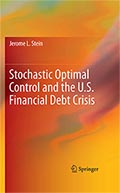The end of a year is a good time for looking back. And, what we see, is something to be proud of. All of the under-40 Ifo department heads made it to the top 100 performers in their age bracket in Germany, as shown by the Handelsblatt ranking of German economists (or those working in Germany). Two of them, Panu Poutvaara and Ludger Woessmann made it to the top 5. Over one-fourth (28%) of economists in this age category are CESifo Research Network members.
That was not all. Three of the Ifo department heads are among the top 100 overall in terms of research output since 2007. In this group, close to half (44%) of the top 100 (and 70% of the top-ten) are CESifo Research Network members. Furthermore, over 40% of the top 250 in terms of lifetime research output are also CESifo people. And, remarkably, three under-forties from Ifo (Panu Poutvaara, Ludger Woessmann and Marcel Thum) have already made it into this hallowed list.
Finally, 39% of the top-100 (and 60% of the top-ten) German economists working abroad are also members of our Network.
A hat-tip to all of them. Keep up the good work.
New Book
 Jerome Stein (Brown University) will bring out next March a book on Stochastic Optimal Control and the US Financial Crisis, an interdisciplinary work linking economics and applied mathematics. It devotes one chapter each to the European debt crisis and the US debt crisis. Jerome Stein (Brown University) will bring out next March a book on Stochastic Optimal Control and the US Financial Crisis, an interdisciplinary work linking economics and applied mathematics. It devotes one chapter each to the European debt crisis and the US debt crisis.
You may browse a couple of chapters at http://www.dam.brown.edu/people/stein.htm. This is how he describes the book:
The theme of the book is that the application of Stochastic Optimal Control (SOC) is very helpful in understanding and predicting debt crises. The mathematical analysis is applied empirically to the financial debt crisis of 2008 and the crises of the 1980s, and concludes with an analysis of the European debt crisis. I use SOC to derive a theoretically founded quantitative measure of an optimal, and an excessive leverage/debt/risk that increases the probability of a crisis. The optimal leverage balances risk against expected growth. The environment is stochastic: the capital gain, productivity of capital and interest rate are stochastic variables, and for an insurance company, such as AIG, the claims are also stochastic. I associate the housing price bubble with the growth of household debt. A bubble is dangerous insofar as it induces a non-sustainable debt. This danger is exacerbated insofar as a complex financial system is based upon it.
| 